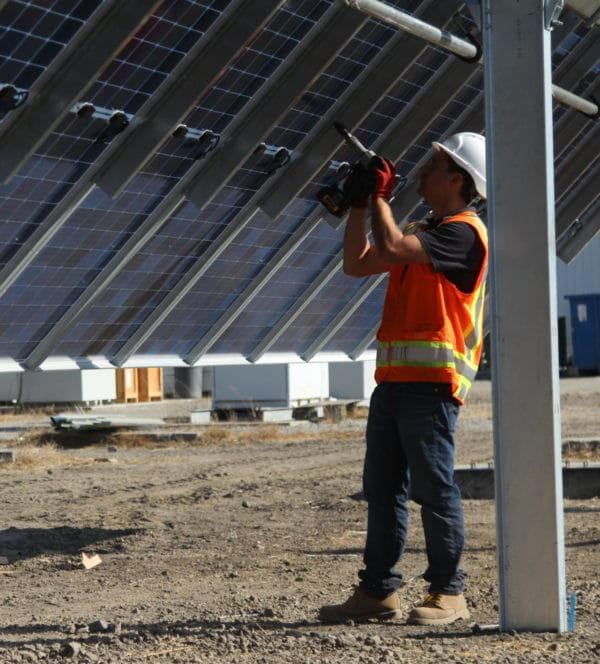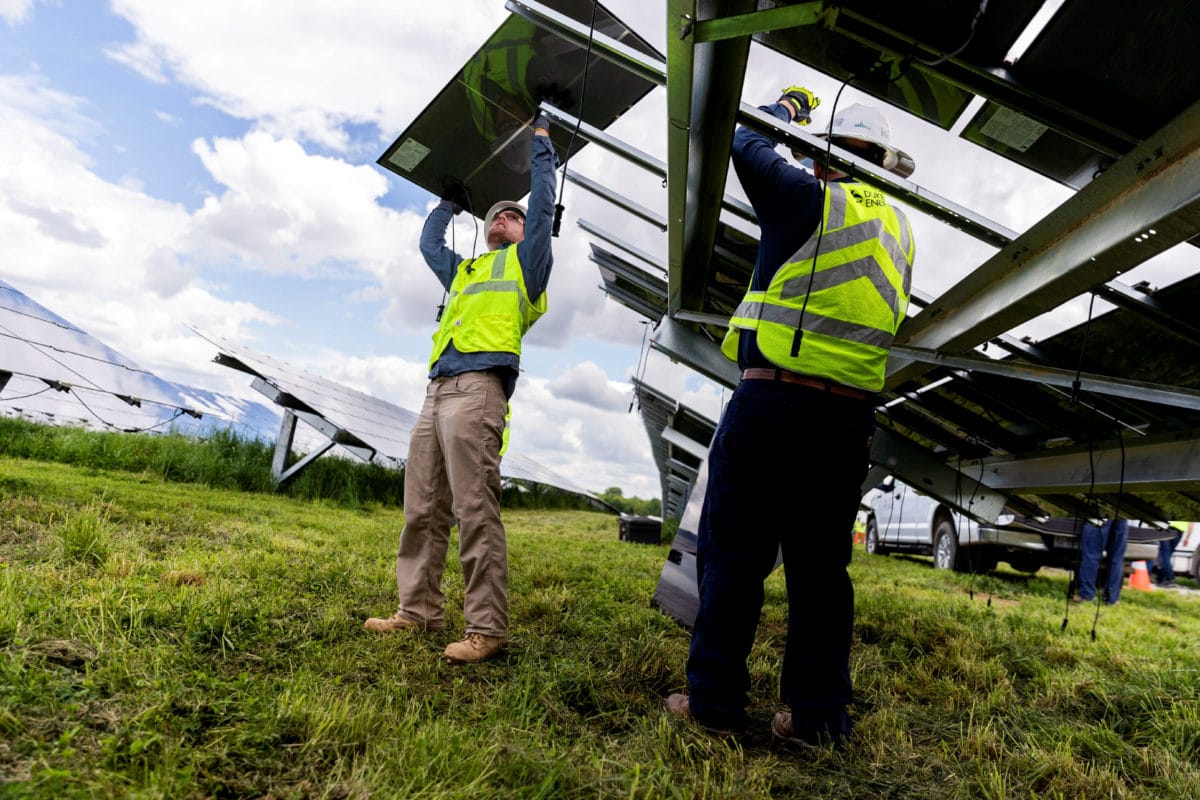Renewable energy recruitment company RO shared results from a salary survey of over 400 respondents in the U.S. solar industry.
The survey found that above-market salaries, guaranteed first-year bonuses, and flexible remote work options all were important to successful job offers in 2021. In fact, 82% of respondents said remote work was important to them. At the same time, only 17% of survey members said they do not work remotely. Nearly half (46%) said they work fully remote, and the rest reported a blended approach.

Image: Borrego
On average, respondents reported a 3-5% pay raise each year. Despite this, individuals were not likely to seek new opportunities unless the starting salary at a new company was on average 12% higher than their current salary.
Last year’s survey reported a 6% pay gap between males in females who worked in the same role and offered the same experience. In 2021, that gap widened to 10%.
When asked what the most important benefit of work was, 29% said the culture and work environment mattered most. This was the top response for those who reported 0-5 years of experience as well as for those with 16+ years in the industry. A work from home option was most important to 29% of respondents; it was the top benefit for industry members with 6-15 years of experience.

Image: NEXTracker
Other popular benefits included flexible working hours, (18%) health insurance, (13%), and retirement contributions (8%). Childcare support, and per diem expense coverage each garnered 2%.
When asked what they felt was missing from their current compensation packages, respondents said equity and salary increases (12% each), 401k retirement plans (11%), more paid time off (9%), and a bonus (9%).
On average, a solar industry member had 15 days of paid time off. Around 10% of respondents said they have unlimited holidays.
Salaries
According to the survey, construction jobs across all sectors paid around $84,600 entry-level. Construction workers with six to 10 years experience made $126,000, and those with 16+ years reported making $170,600. In development jobs, the first two years of experience led to an average pay of $87,600. That rose to $129,200 by years six to 10, and $187,100 for those working in the industry for 16 or more years.

Image: Sullivan Solar
Engineers and operations and maintenance (O&M) workers started off with the lowest salaries, $77,500 and $67,500, respectively. By year six to 10, engineers were paid an average of $94,200 annually and O&M pros made $121,800. By year 16, engineering jobs paid $127,600 on average, and O&M roles made $174,000.
Finance offered the highest pay levels in solar: an average of $94,000 for the first two years of experience, $149,100 years six to 10, and $195,000 for experience beyond 10 years.
The survey said that utility-focused solar jobs pay more than commercial and industrial (C&I), as well as distributed generation (DG). In the first two years of experience, C&I/DG workers averaged $75,500. Meanwhile, utility-focused jobs started off with salaries averaging $88,000.
Interestingly, mid level (six to 10 years) C&I/DG averaged $120,400, while utility-scale was slightly lower at $116,800. Highly experienced utility-sector workers with more than 16 years of experience made on average $173,000, while similarly experienced C&I/DG workers averaged $169,300.
This content is protected by copyright and may not be reused. If you want to cooperate with us and would like to reuse some of our content, please contact: editors@pv-magazine.com.









By submitting this form you agree to pv magazine using your data for the purposes of publishing your comment.
Your personal data will only be disclosed or otherwise transmitted to third parties for the purposes of spam filtering or if this is necessary for technical maintenance of the website. Any other transfer to third parties will not take place unless this is justified on the basis of applicable data protection regulations or if pv magazine is legally obliged to do so.
You may revoke this consent at any time with effect for the future, in which case your personal data will be deleted immediately. Otherwise, your data will be deleted if pv magazine has processed your request or the purpose of data storage is fulfilled.
Further information on data privacy can be found in our Data Protection Policy.